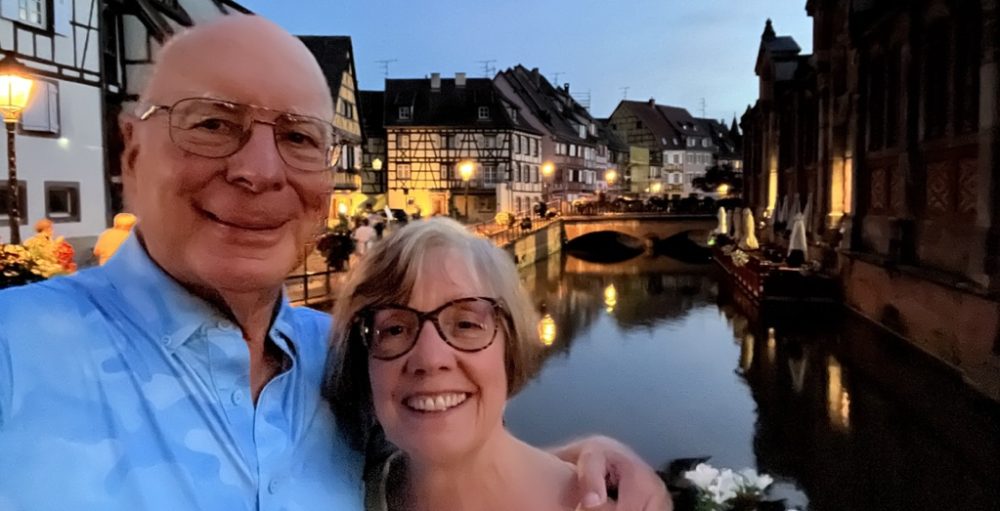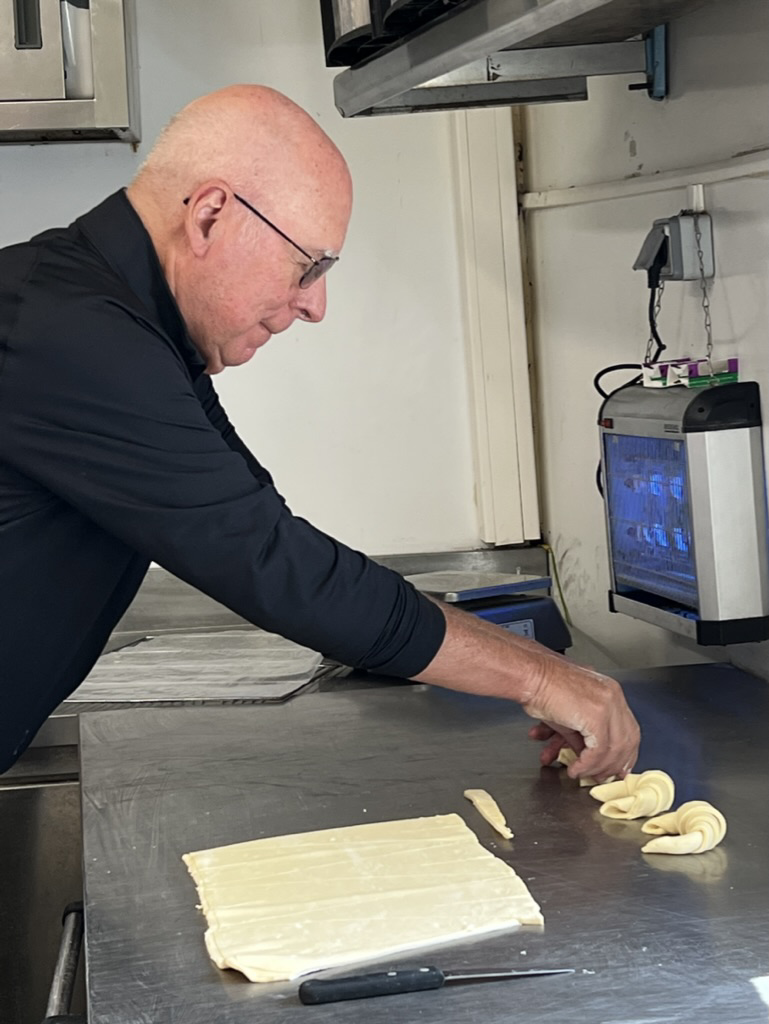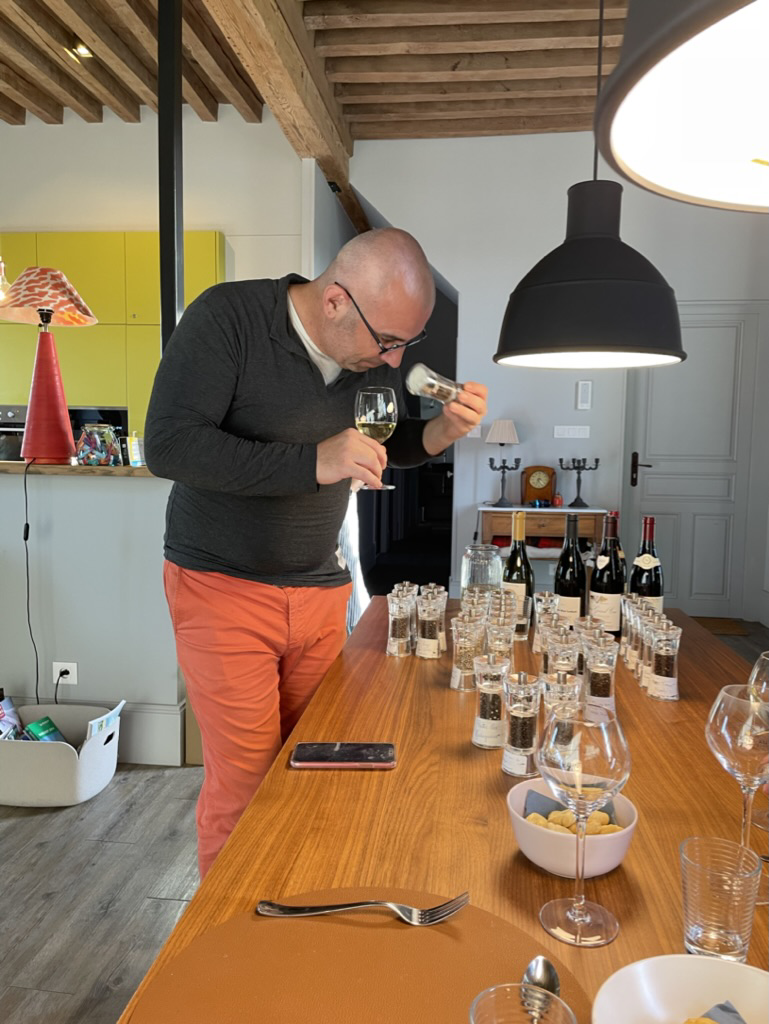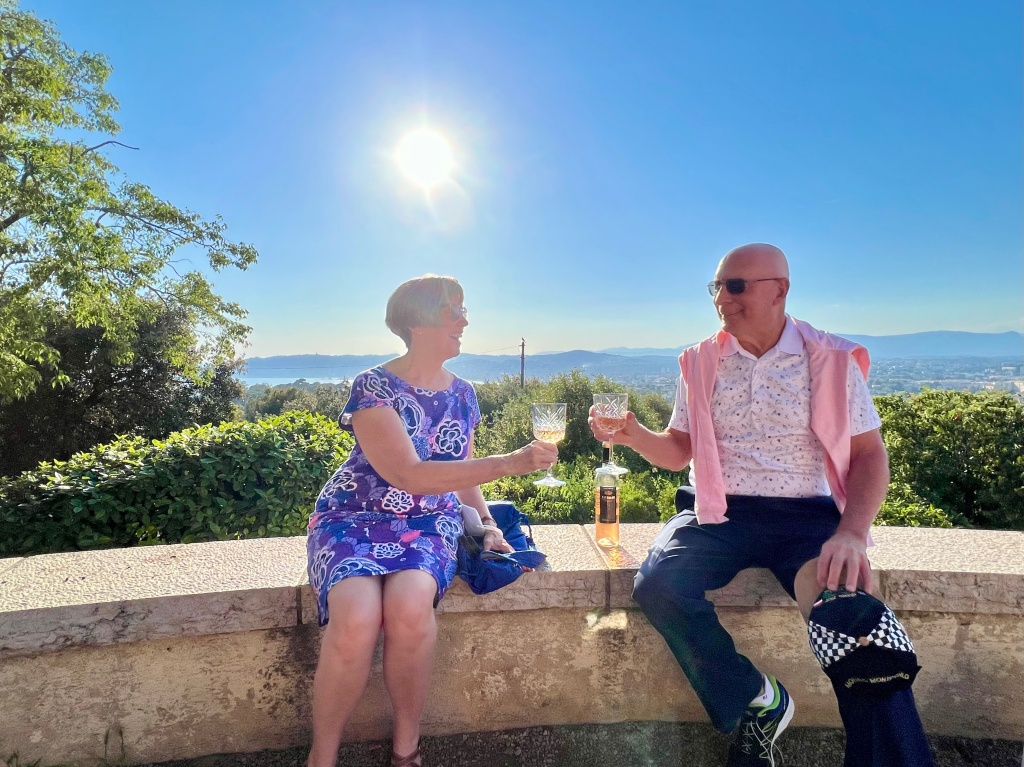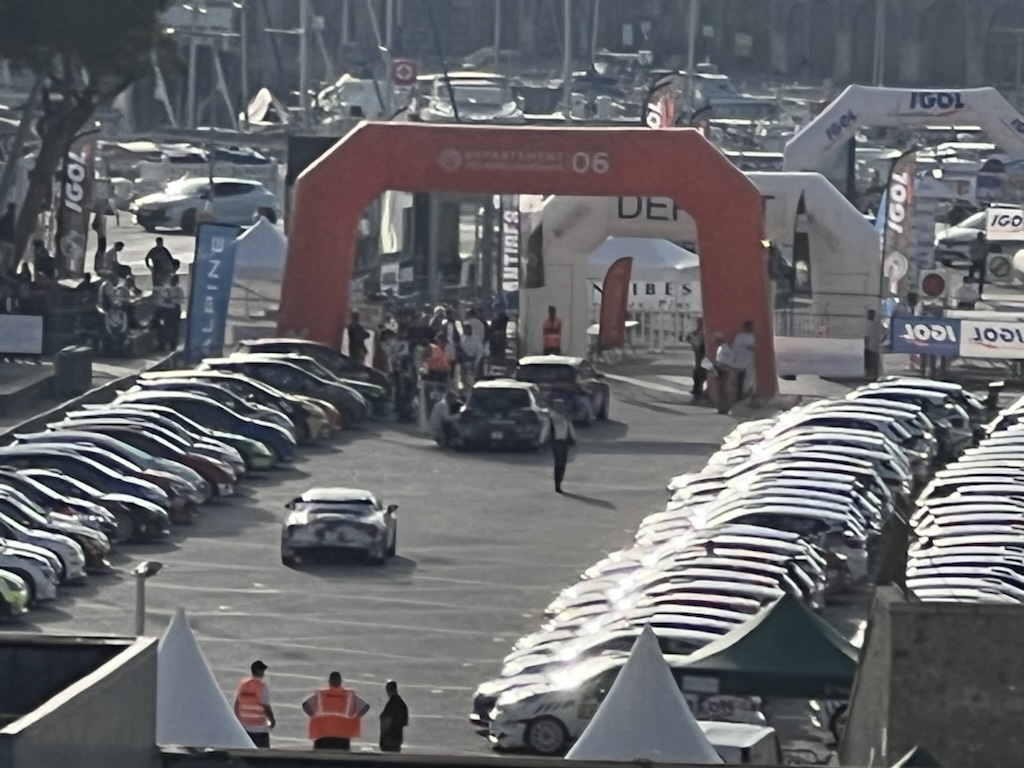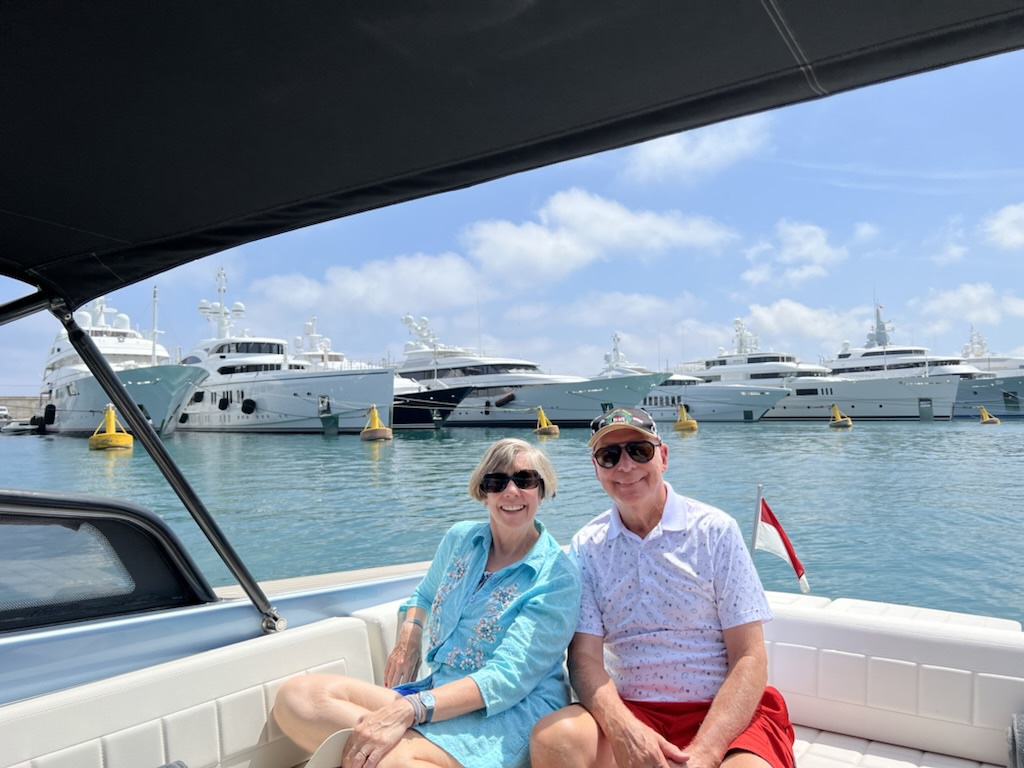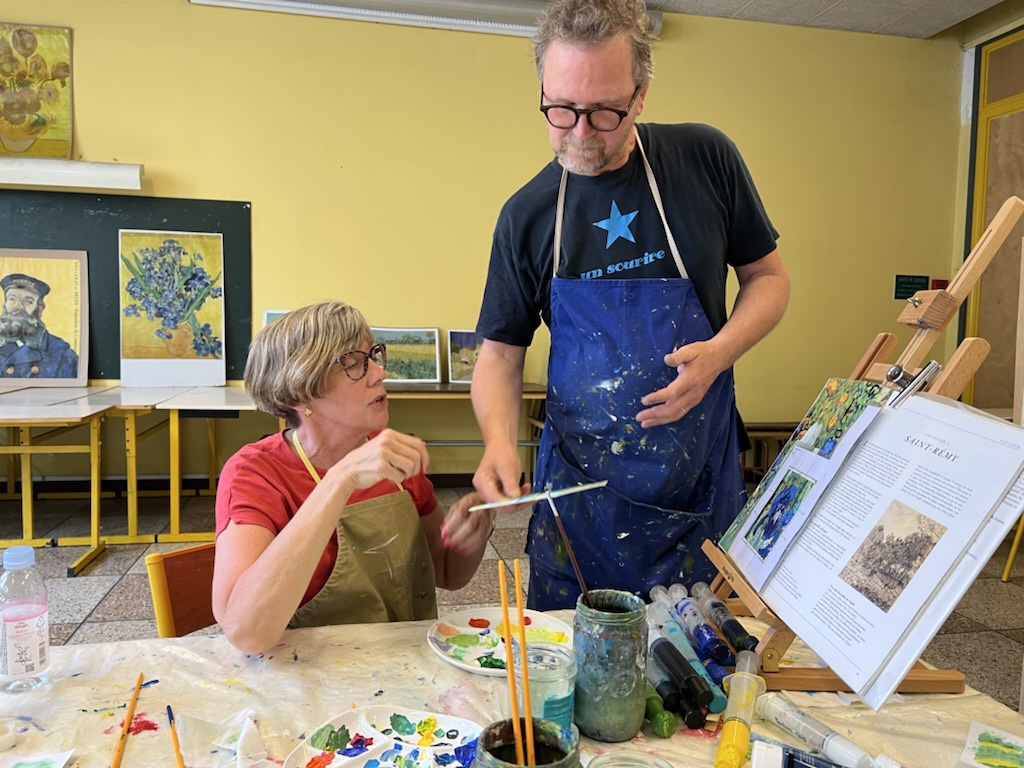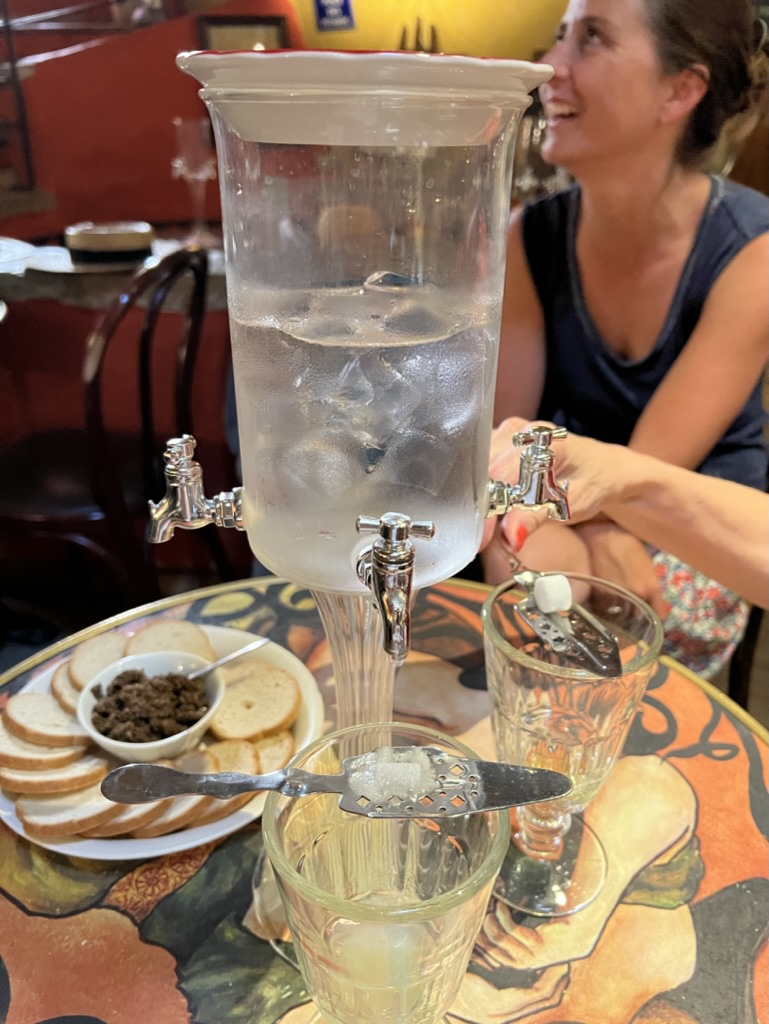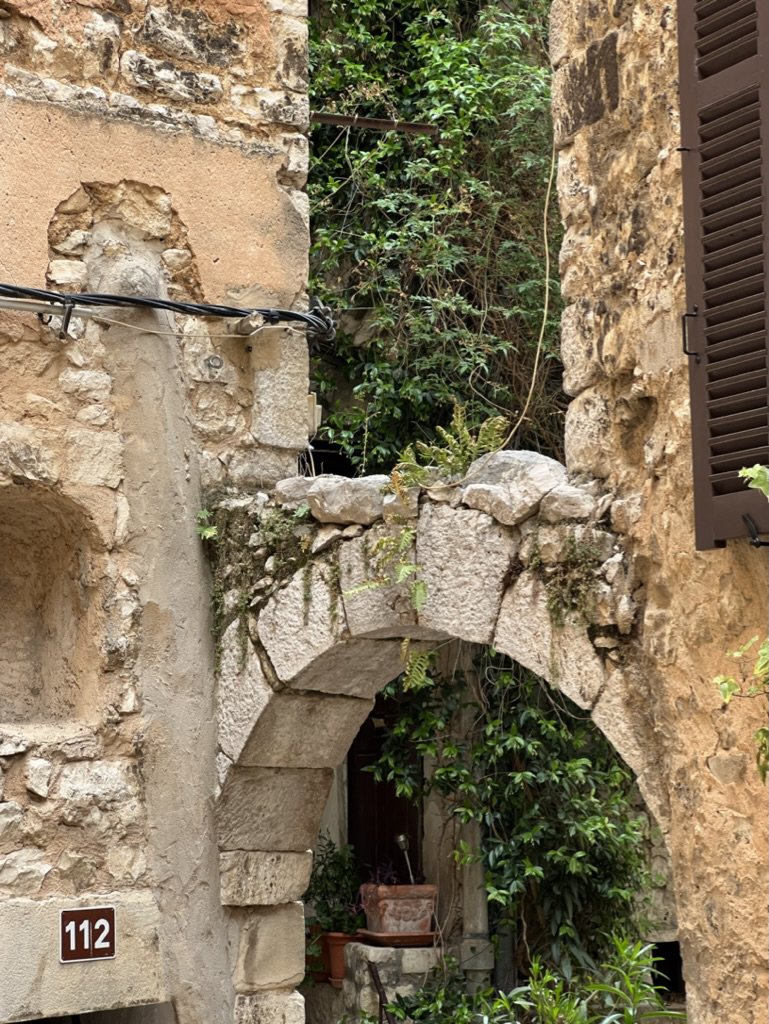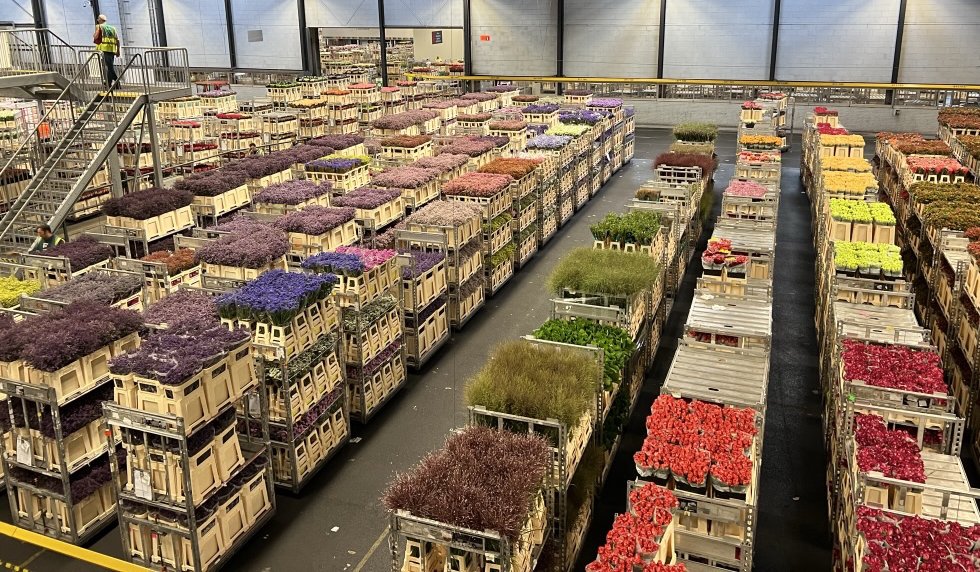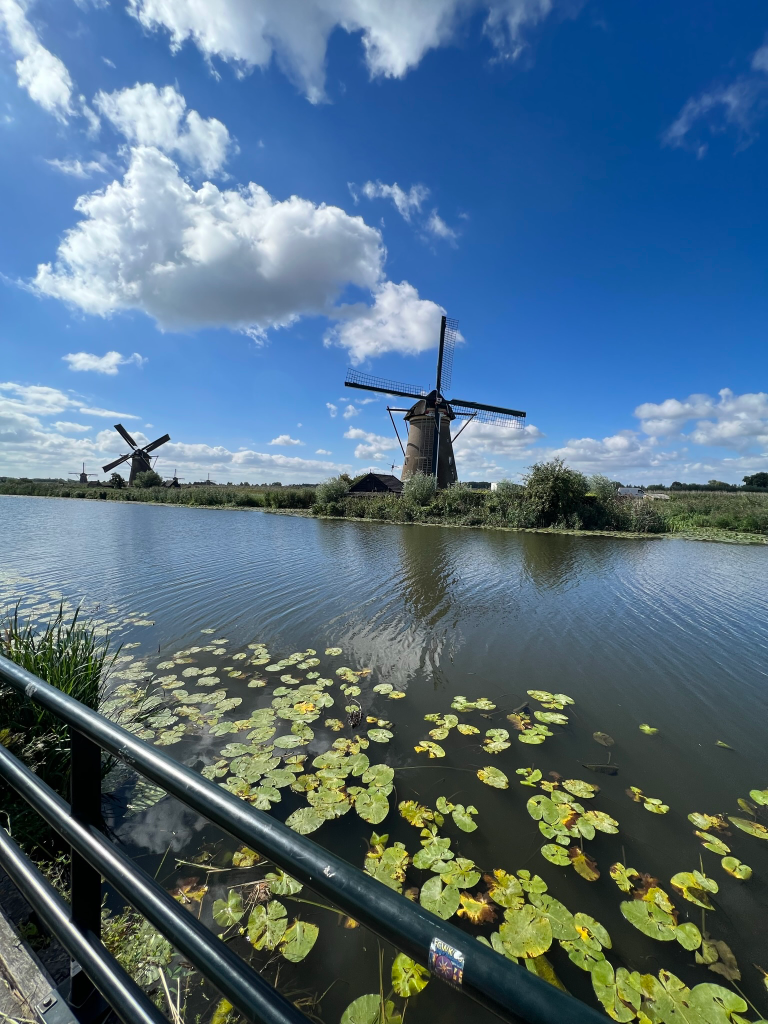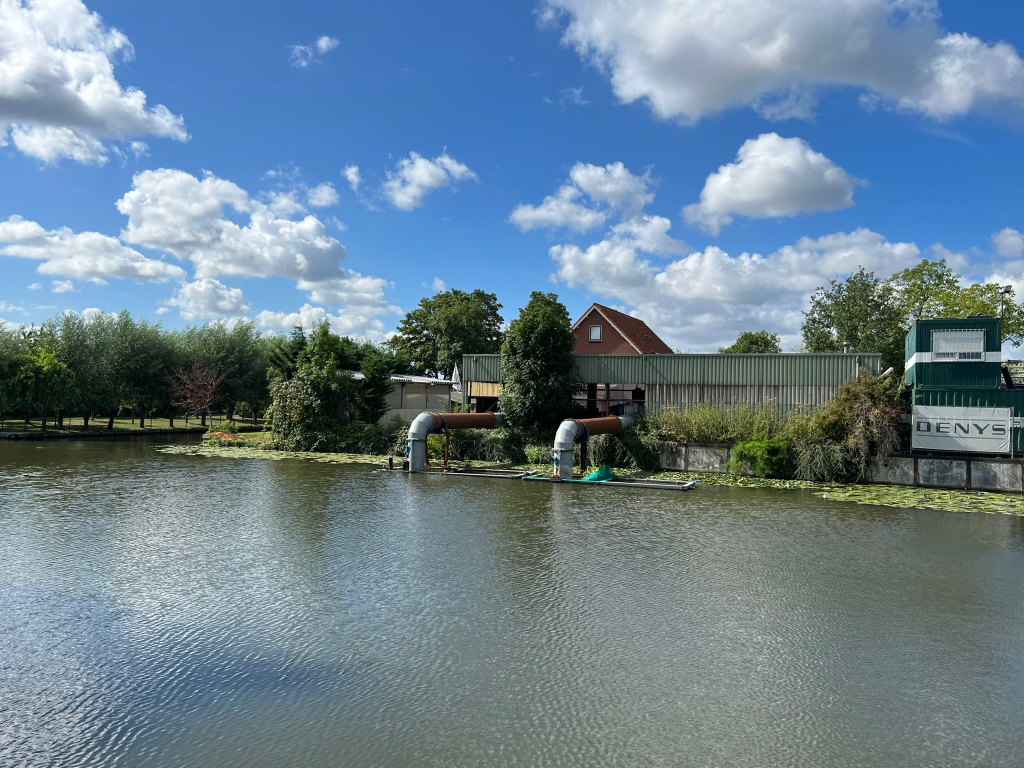With the help of our bespoke tour organizer Exclusive France Tours we planned an over the top once in a lifetime experience in France, and we happily paid for an over the top experience. Even so we could not have imagined the variety and depth of experiences we are having, all of which are expanding our quest for food and wine appreciation.
Here are the highlights of just three days in Burgundy.
Monday morning found us first at the famous Hospices de Beaune with our private guide. It is normally filled with people, yet there were only three other people, and we spent 1 1/2 hours learning all about its history. Then we went to a baker, who took us into his shop to actually make croissants and baguettes the french way. Hands on.
After lunch we met privately with Jean-Pierre Renard, who travels the world as an expert on Burgundy wines and terroir. An introduction to the wines of Burgundy. At 4:30 pm Philippe Marques came to our apartment to begin a three-night series about wine and food pairing. Philippe is former sommelier at a Michelin three-star restaurant, so first we went to five different wine stores to source the wines for our three evenings – an experience in itself. Then we retuned to our apartment where a private chef was preparing the meal for our first evening. That evening we focused on the role of pepper in influencing the ideal food and wine pairing. Philippe had a collection of forty peppers, and we actually went through an exercise to determine which peppers had the most harmony with the wines we had selected for the evening. Then of course we added the peppers we chose to the food, and appreciated the with and without.
On Tuesday Philippe joined us for a journey through the vineyards to two wineries. Wines from Romaine Conti are the most expensive in the world. Each bottle made from this vineyard sells for $9,000 – $20,000. We have to say that in general we have been very pleased with the cost of wine in France. It is well below Napa Cabs.

Most wineries in Burgundy have no wine to sell. It is all sold through export and local wine shops. Many have no tasting rooms either. They are just production facilities with centuries old wine cellars, and family run businesses producing Premier and Grand Cru wines. Getting into them is a special treat. Philippe could go at any time because of his sommelier status. Bringing two guests was a very special favor granted to him.
The first one was Hubert Lignier, who produces Premier and Grand Cru rouges and blancs. We spent an hour in his cellar barrel tasting six different 2020 and 2021 wines. In this cellar we began to fully appreciate the French approach of a larger taste and chewing the wine to fully appreciate it, then spitting it out. It took us a while, but we finally realized that we could only enjoy it if we followed that approach. The custom here is to pour any wine left in your glass back into the barrel. There is plenty of alcohol to sanitize anything one might “deposit”. At the end he opened a small unlabeled bottle of 2016 to taste to appreciate what four years adds, which is an even more rare treat.

After lunch and more discussion with Philippe we went to see one of the vineyards in Aloxe Corton, and spent an hour with his son in their cellar. They had just bottled their 2020 (no labels yet). Nothing is labeled until shipment because the natural dampness of the cellars ruins the labels. He amazed us by opening six bottles for various tastings. As we concluded he said “I cannot drink all of these bottles we opened tonight. Please choose on to take home as my gift. We chose a Grand Cru blanc.
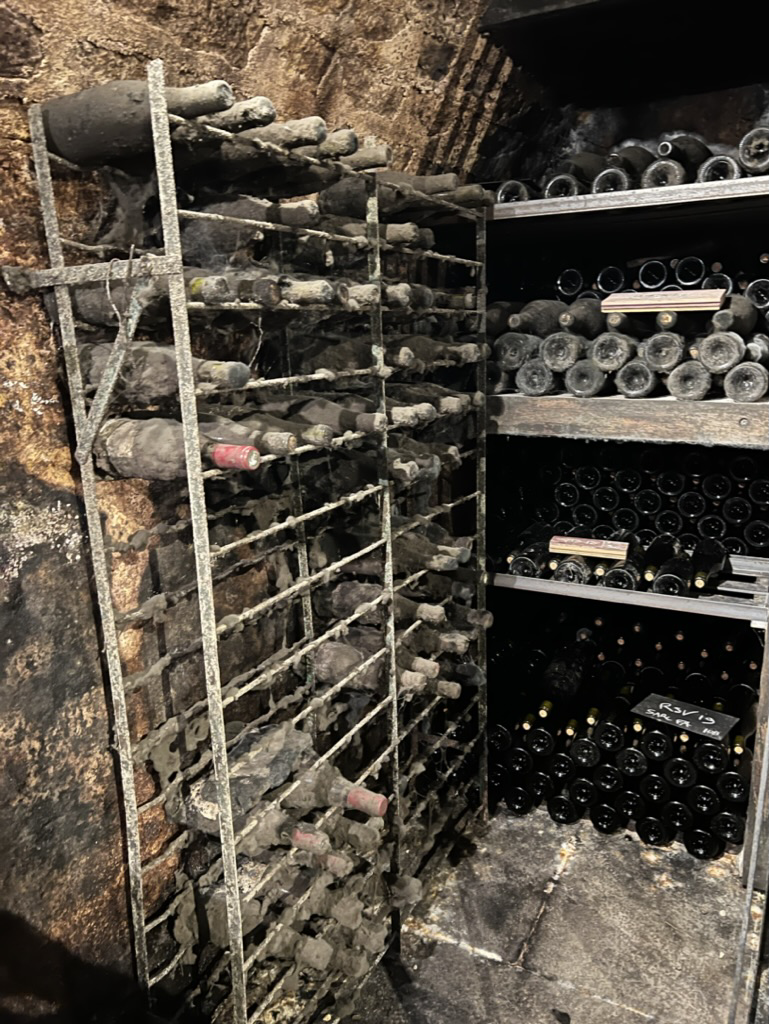
Most of these vineyards are multi-generation family affairs. They are now facing dual challenges. The first is that the inheritance tax in France is 35%. When the parent dies the inheriting son or daughter must pay the tax on the current value of the land. With the incredible prices that can be millions of dollars, which they cannot afford to take on even as a loan. And the second is that taking over the family business is a lifetime commitment. Aloxe Corton had wisely encouraged their son to try his wings, then decide. He studied Japanese in college, and spent time as an interpreter to Japanese visiting French wineries. Then one day he decided that he wanted to “come home” and join the family business. His parents were relatively young, which made it easier. The baker we spent time with on Monday was fifth generation, and his children were not interested. That is a really hard business, of course, and one has to absolutely love it. So he will have figure out what to do with the business when it becomes too tough for him.

Tuesday ended back at our apartment, where Philippe and our private chef had designed two meals with sea bass. The first featured sea bass carpaccio, designed to pair with white wine. The second featured a thicker sea bass filet with a veal stock sauce, designed to pair with red wine.
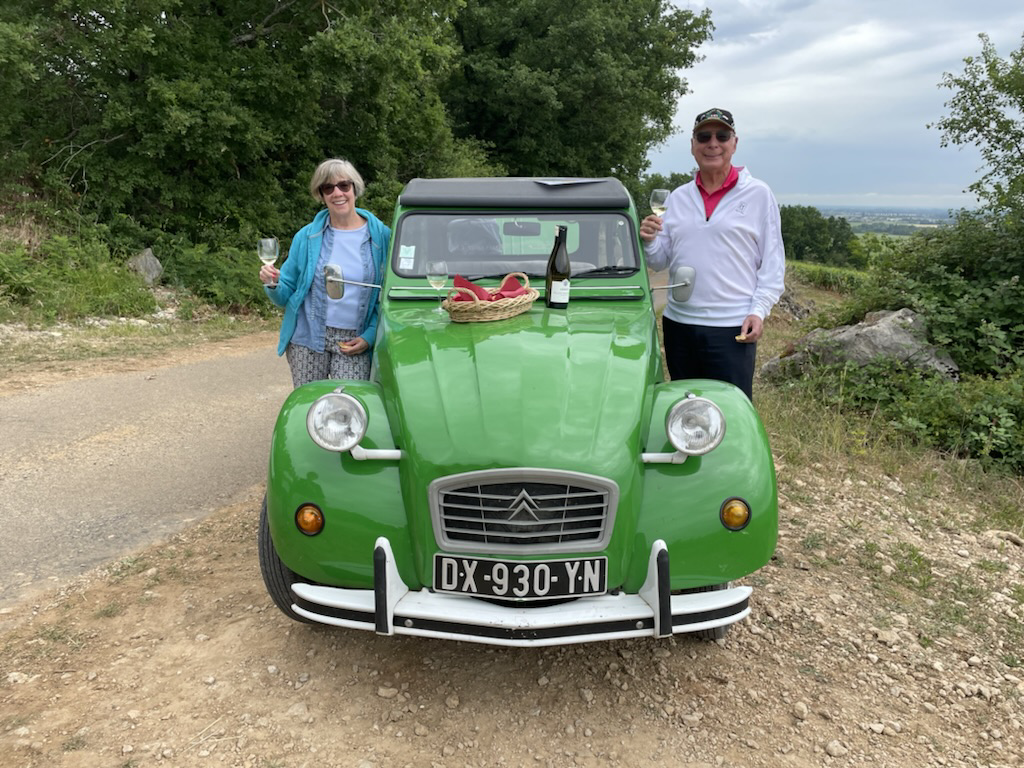
Wednesday featured a classic Burgundy experience, driving a Citroen 2CV through the vineyards — with Jean-Pierre as our personal guide. We stopped many times to look at differences in the terroir. Burgundy soil is full of rocks and marle, which date back hundreds of millions of years. They provide warmth to the vines — sometimes too much. We saw the differences in the terroir in which $9,000 bottles are grown and less expensive bottles — and it is subtle. Here is one example of a piece of marne which shows it age from when the sea covered Burgundy.
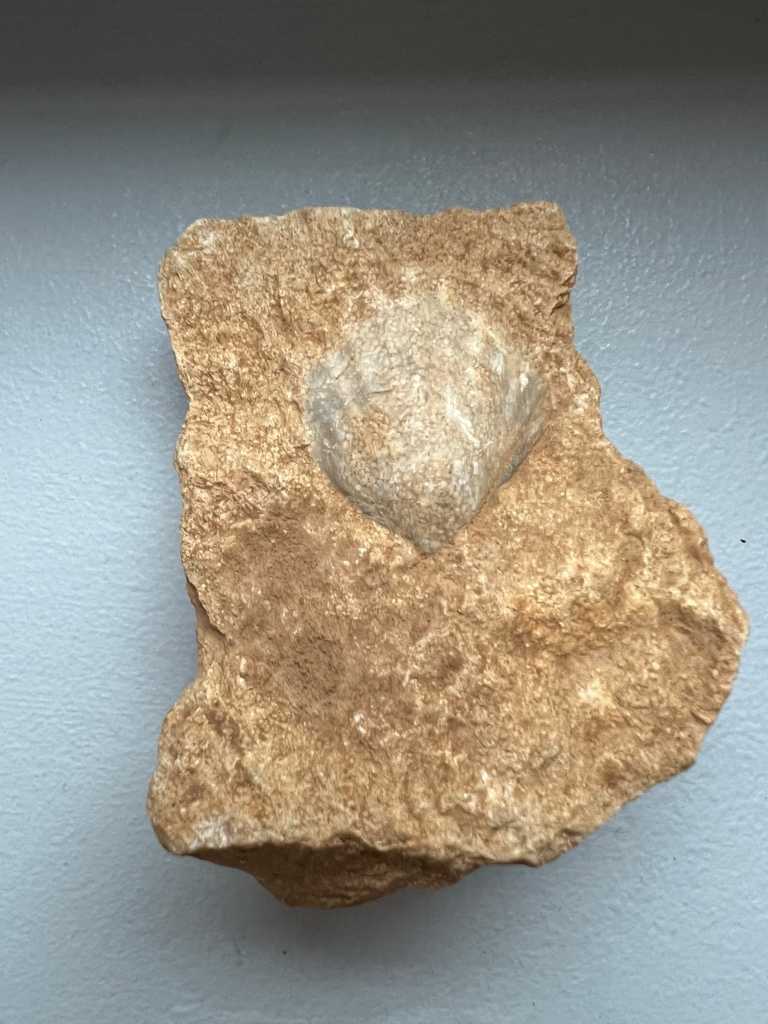
Here our wine tasting was in the middle of the vineyards of the Montrachet and Batard Montrachet plots, followed by a picnic al fresco. And I was driving the 2CV all day except for departing and entering Beaune and chance for Betsy as well.
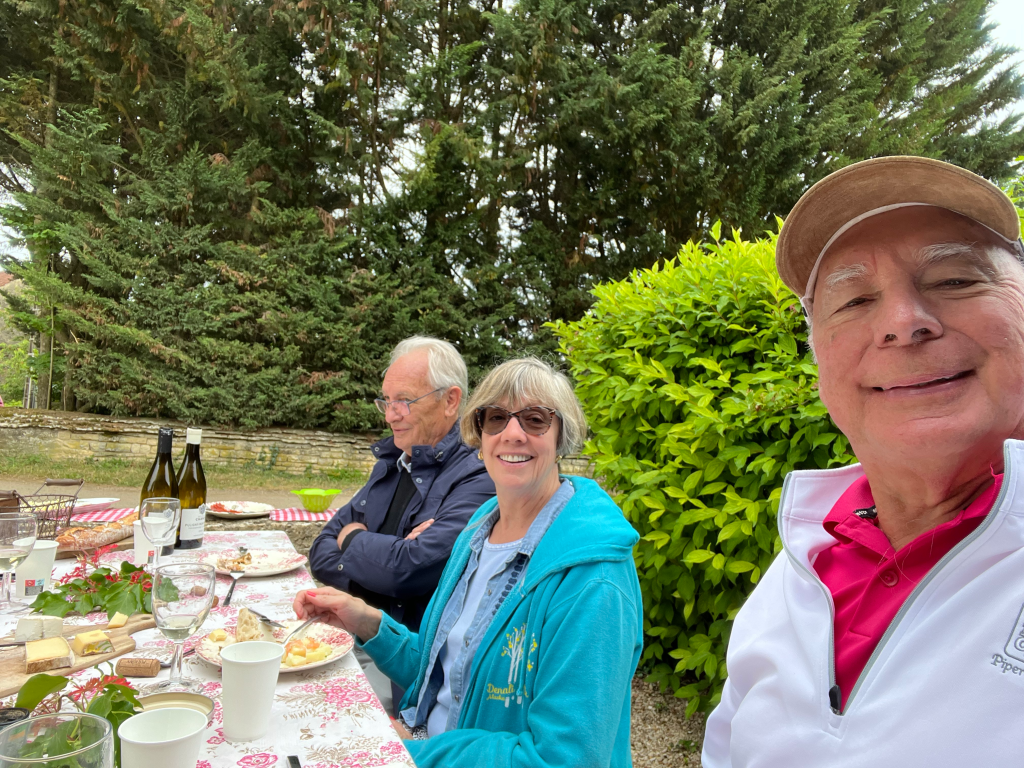
The afternoon concluded at a cooperage. Parts of the barrel making process have been forced to become automated, which makes seeing the process impossible for safety reasons. Yet we were really curious to see how they are made. One family run cooperage decided to create a demonstration center, and we not only got to see how they are made but make one ourselves.
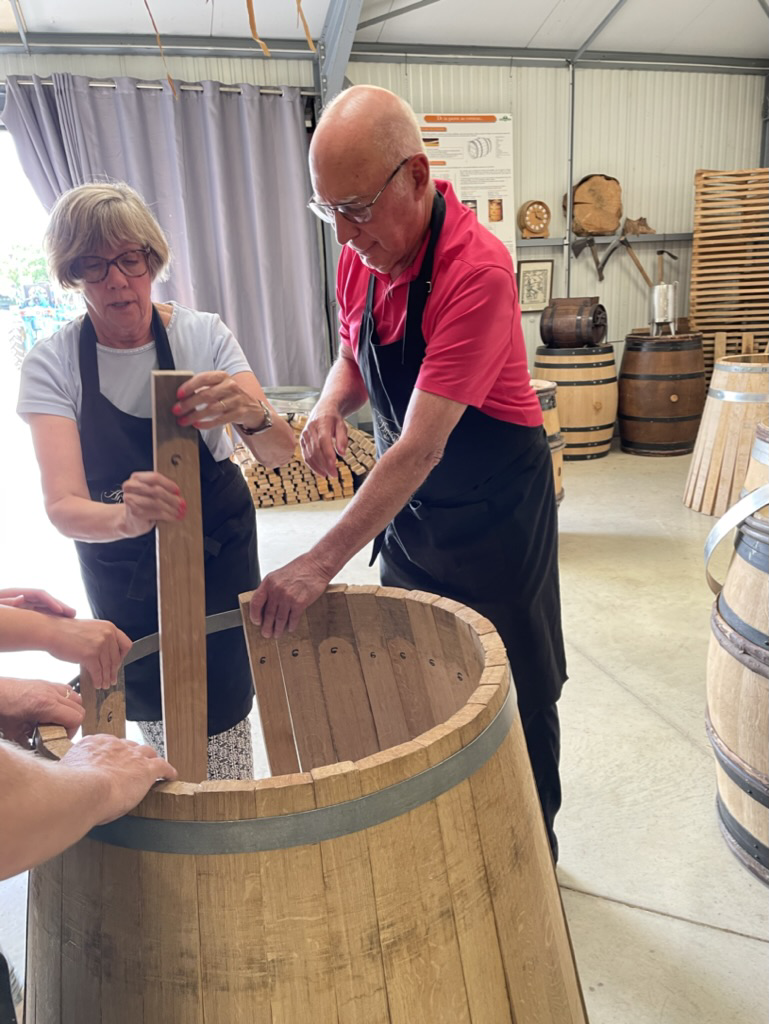
We have another four days in Burgundy, with yesterday a planned “vacation from vacation”. Then we head to Dijon and then the Champagne area. These three days have been absolutely amazing. We have learned so much. Anything Grand Cru will command high prices, yet there are many plots nearby that are 97% as good at 1/3 the price. We are grateful to our two experts for sharing their secrets, and actively learning the distribution system. If you buy wine here for shipment they deduct the VAT, which is 20%. Shipping cost for several cases is about $12/bottle. So a $60 bottle basically ships free. Before we come home we will have ordered several cases for direct delivery.
Throughout our journey we have been appreciating the difference between French and American cooking. When we get home we are throwing all of our bottled salad dressings out. A freshly made blend of olive oil, vinegar, honey, dijon mustard and salt will become our standard. We will spend the extra time to go to our Farmers Market for produce, and only buy vegetables in season. We will strive to augment any item on the plate with multiple flavors and texture. Our pepper selection will expand, and be used a lot more.
And our approach to wine and food pairing will change. Now we will open the bottle we choose first, and sense the wine. Then we plan to alter how we cook and season the food to optimally pair with the wine. All of this will take more time of course. Luckily we have that luxury, and really look forward to that activity together.
Two final photos. We love strolling through these villages, and had 15 minute walk to the restaurants. On our way home last night the sunset over the ramparts and canals was stunning. And while out visiting more wineries today we picked up a fresh summer truffle. So we will have truffle butter beginning tonight.
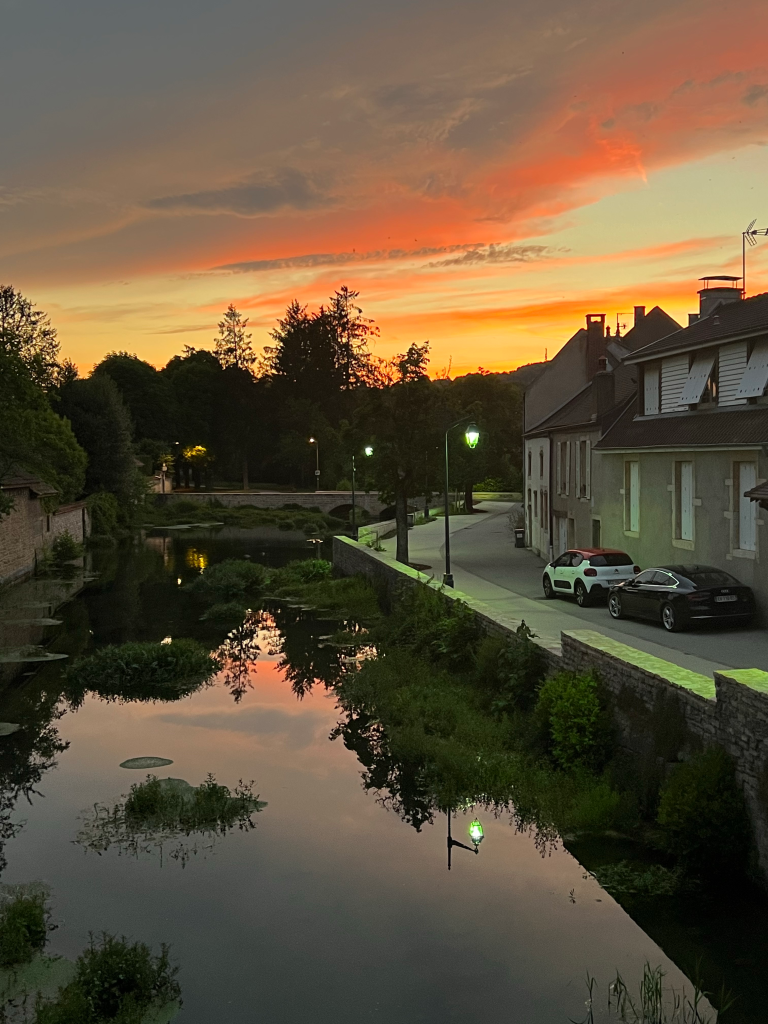

Thank you for reading all of this. It is a message only for special friends and family who will really appreciate it.
– Betsy and Jim, reporting from Burgundy
